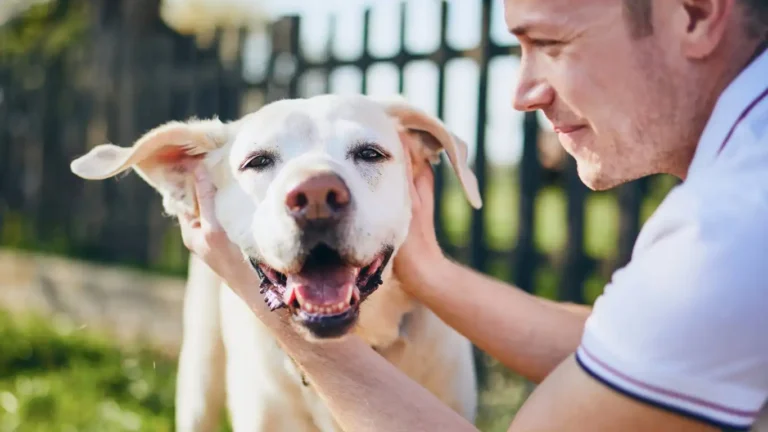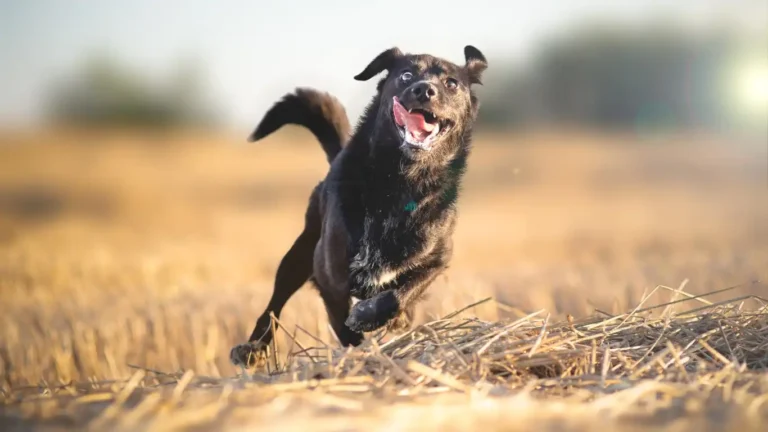Best Ways to Help a Blind Dog Navigate Safely: Essential Tips
If you have a blind dog or are considering adopting one, you might be wondering how to help them navigate the world safely and confidently. It can be a bit daunting at first, but trust me, with the right knowledge and a little patience, you can make a huge difference in your dog’s quality of life. As a Veterinary Technician/Nurse specializing in nutrition, I’ve had the privilege of working with countless pets, including blind dogs, and I’ve seen firsthand the ways we can make their lives more comfortable. One of the first things I always tell pet parents is that with a few modifications and techniques, your blind dog can still live a happy, independent life. In this article, we’ll go over the best ways to help a blind dog navigate safely—whether you’re just starting or you’ve been living with a blind dog for a while, these tips will come in handy. Let’s dive in!
Creating a Safe Space for Your Blind Dog

The first step to helping a blind dog navigate safely is to create a safe environment. Dogs rely heavily on their senses, especially sight, to understand their surroundings. When they lose their vision, it can be disorienting and overwhelming at first. However, by making a few adjustments to your home, you can help your dog feel more at ease and confident. The key is consistency and making sure that things don’t move around too much. Dogs love routine, and they’ll feel more secure if their environment stays predictable. Here are some ways you can help:
- Clear the clutter: The less furniture, toys, and obstacles your dog has to navigate around, the better. Keep walkways and high-traffic areas open to make moving around easier.
- Use rugs or mats: If your dog has difficulty with traction or if the flooring is slippery, rugs or non-slip mats can help them find their way around.
- Set boundaries: Use baby gates or other physical barriers to prevent your dog from accidentally wandering into unsafe areas, like stairs or out into the street.
- Keep things in the same place: Avoid moving furniture or other objects around too much. The less your dog has to adjust to, the better.
In my experience, one of the best ways to help blind dogs feel secure is by keeping their environment familiar. For instance, if your dog enjoys a specific spot on the couch or under a table, make sure they can easily get to it every time. They’ll use their other senses, like smell and hearing, to navigate these spots, and consistency helps them feel safe.
Understanding How Blind Dogs Use Their Other Senses
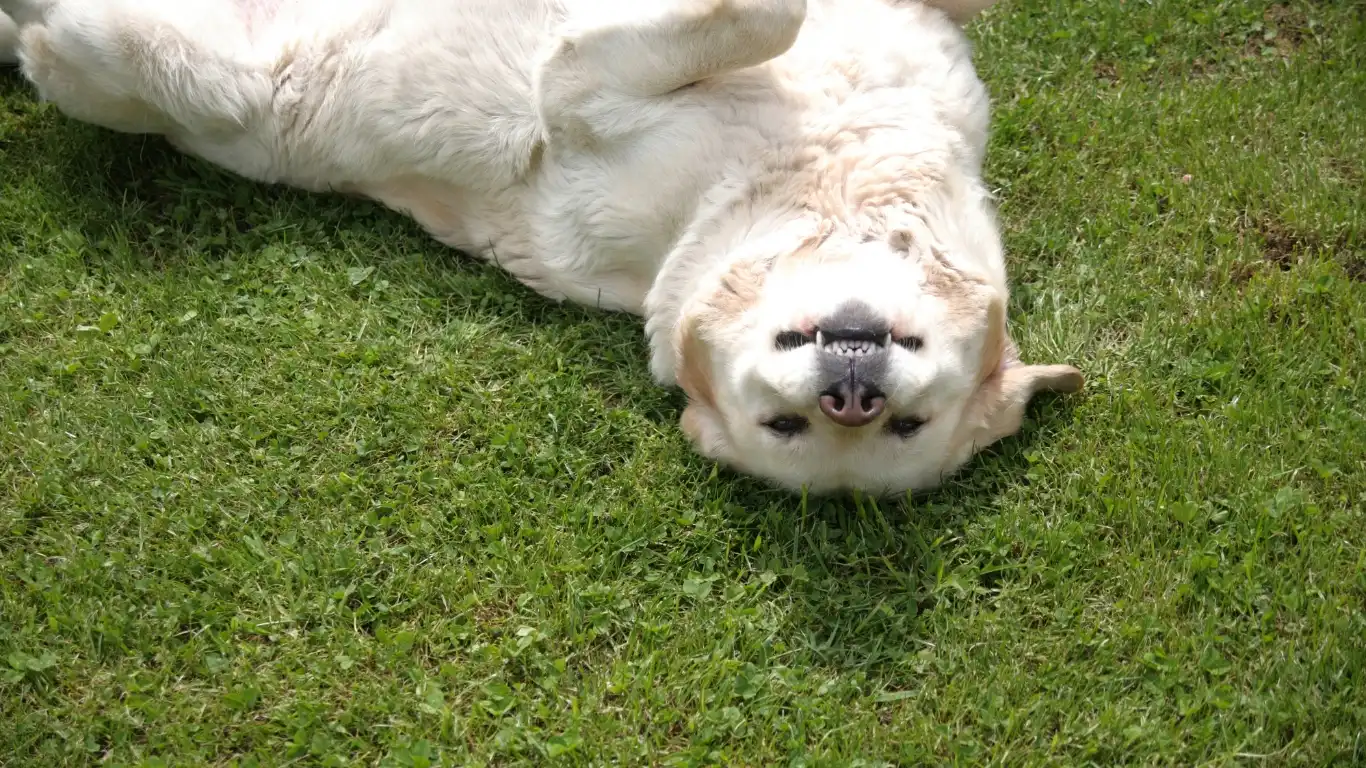
When a dog loses its sight, it doesn’t mean they’ve lost all their abilities to explore and interact with the world. Blind dogs rely heavily on their other senses—primarily their sense of smell, hearing, and touch—to navigate their environment. These senses may become heightened as they compensate for their loss of vision, and by paying attention to how they use these abilities, you can help them adapt. For example, dogs have an incredible sense of smell. They can easily identify familiar scents, whether it’s their favorite spot on the couch or the scent trail left by another pet in the household.
How to Use Smell and Sound to Your Advantage
- Scents for navigation: Use a particular scent to mark specific areas in your home. For example, you could place a lavender-scented oil near the dog’s food and water bowls or at the base of stairs. The familiar smell can guide them.
- Auditory cues: Dogs have an amazing sense of hearing. Clap your hands or make a distinct sound when you want your dog to approach or avoid an area. Using verbal cues like “come,” “sit,” or “stay” can also be very effective when paired with a consistent routine.
- Introduce tactile markers: Tactile cues are also great for guiding blind dogs. For instance, you can use textured floor mats at doorways, stairs, or areas you want to be particularly mindful of. They will learn to associate the texture with the location, making it easier for them to navigate.
As a Veterinary Technician, I always recommend combining multiple sensory cues. This creates a more comprehensive guide for your dog, and they’ll start to feel more confident moving around their space. Trust me, they can do it—they just need your support in adjusting to their new way of navigating the world!
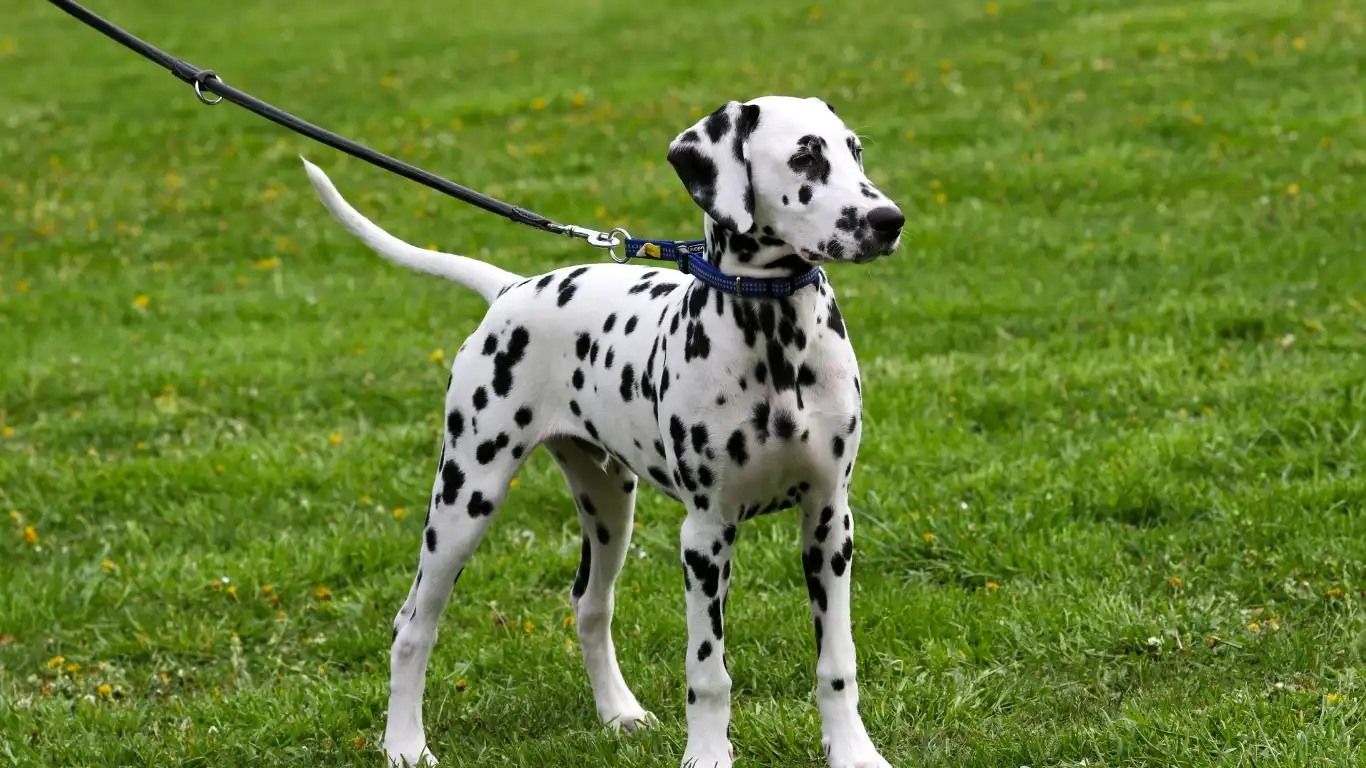
Now, let’s talk about the importance of training. A blind dog can’t rely on its sight to guide them through the world, but with some training, they can learn to use their other senses to navigate and feel confident. I know it might seem like a lot of work at first, but it’s all about positive reinforcement and gradual progress. Here’s how to get started:
- Start with basic commands: You can begin by teaching your dog simple commands such as “sit,” “stay,” and “come.” Use treats or praise as rewards, and keep sessions short and positive. Blind dogs still respond well to training—sometimes even better than sighted dogs, since they rely more on sound and touch.
- Use sound cues to guide movements: As you guide your dog to different areas in your home, use consistent sounds. Clap your hands, tap on the floor, or use a clicker to signal the direction you want them to go.
- Reward and repeat: Dogs thrive on repetition. When your dog successfully navigates through an area or follows a sound cue, reward them with praise or treats. This will reinforce their confidence and help them learn faster.
In my experience, patience is key. It may take some time, but as long as you stay consistent and positive, your blind dog will learn to navigate their environment with confidence and ease. And the best part? The bond you’ll build through this process will be incredibly rewarding for both of you!
How to Use Tools and Technology to Assist Your Blind Dog
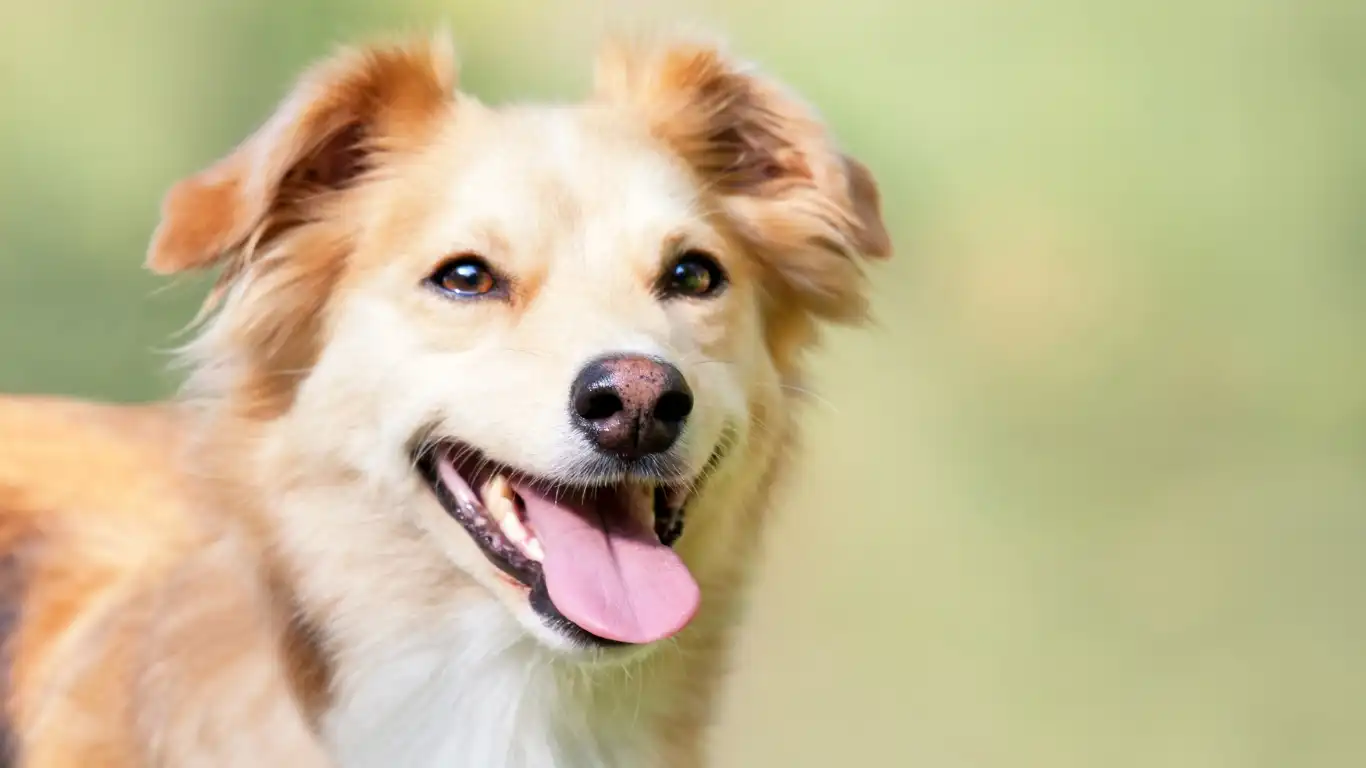
Aside from creating a safe space and training your blind dog to use their other senses, there are also some amazing tools and technologies that can help your dog navigate more easily. The right assistive devices can provide an extra layer of safety and confidence, allowing your dog to explore more freely without constantly needing your assistance. I’ve seen firsthand how much these products can benefit blind dogs, and I highly recommend incorporating them into your dog’s routine. Here are some of the best tools for helping blind dogs navigate safely:
Collars and Vests with Audible or Tactile Cues
One of the most innovative products I’ve come across is the use of collars or vests that emit sound or vibrate as your dog moves. These devices can be used to help your blind dog stay aware of their surroundings or even communicate with you. For example, some vests are equipped with bells or other audible cues that your dog can hear while they’re moving around. These sounds serve as gentle reminders to your dog, helping them avoid obstacles or giving them cues for when to slow down.
For dogs who are more sensitive to sound, there are vests with vibrating alerts. These can help guide your dog in the right direction or alert them to important situations, like approaching a door or navigating a busy street. The key here is to find the right balance between the sensory cue that works for your dog. It’s worth experimenting with different options to see which one your dog responds to best.
Guide Dogs and Support Animals
While not an everyday tool for all blind dogs, there are some dogs trained as guide dogs or support animals specifically for blind pets. These dogs help their blind companions by leading them around and assisting with obstacles. Guide dogs are highly trained and can be a great resource if your blind dog is struggling with mobility in public spaces or unfamiliar areas.
If you have a blind dog that struggles with getting around on walks or in new environments, you might want to consider reaching out to a professional service dog organization that can train a guide dog for your pet. It’s a big commitment, but it could significantly improve your dog’s ability to navigate new spaces. In my experience, support dogs not only assist with mobility, but they also provide a deep sense of companionship, which can boost both their emotional and physical well-being.
Walking and Exercise for Blind Dogs: Tips for Safe Adventures

Physical exercise is vital for all dogs, including those who are blind. However, when a dog can’t rely on sight to avoid obstacles or navigate new terrain, their walking and exercise routine can look a little different. But don’t worry—your blind dog can still enjoy walks, playtime, and outdoor adventures with a little preparation and care. Let me share some practical tips I’ve learned over the years for keeping blind dogs active and safe during exercise:
Use a Harness for Better Control
When walking a blind dog, I always recommend using a harness instead of a collar. A harness gives you more control, which is especially important when navigating unfamiliar areas. You can use a standard no-pull harness or one specifically designed for dogs with mobility challenges. The key is to have a firm grip on the leash so you can safely guide your dog around obstacles. Additionally, some harnesses come with reflective materials or even lights, making nighttime walks safer for both you and your dog.
Leash Training and Obstacle Awareness
During walks, your blind dog might need a bit of extra help when it comes to avoiding obstacles. I’ve found that using a retractable leash or a shorter leash gives you more control over the distance between you and your dog. This also allows you to gently guide them around obstacles without pulling them too much or causing discomfort.
One of the most important things to remember is to walk at a steady pace and keep your dog’s leash taut, but not too tight. Giving them a gentle tug when they approach an obstacle will signal them to stop and adjust their direction. Over time, your dog will learn to trust the cues and develop their own awareness of certain obstacles, like curbs, trees, or benches.
Just like in the house, sound can be a valuable tool for blind dogs on walks. If you’re in a quieter area, try clapping your hands or using a sound device to help guide your dog. It can be helpful when you’re about to cross a street or navigate a tricky turn. Dogs rely on your voice as well, so give your dog plenty of verbal cues and praise when they’re doing well.
Another tip I’ve found helpful is to bring along some of your dog’s favorite toys during walks. When they stop and interact with the toys, they’ll be familiar with the textures and smells, which can help ground them when they start to feel disoriented. You might also want to consider using a dog stroller for particularly long walks or in busy areas like parks or shopping districts. Strollers can offer a safe, controlled space for your dog while allowing them to enjoy the sights and smells of the outside world.
Introducing Other Pets and Socialization for Blind Dogs
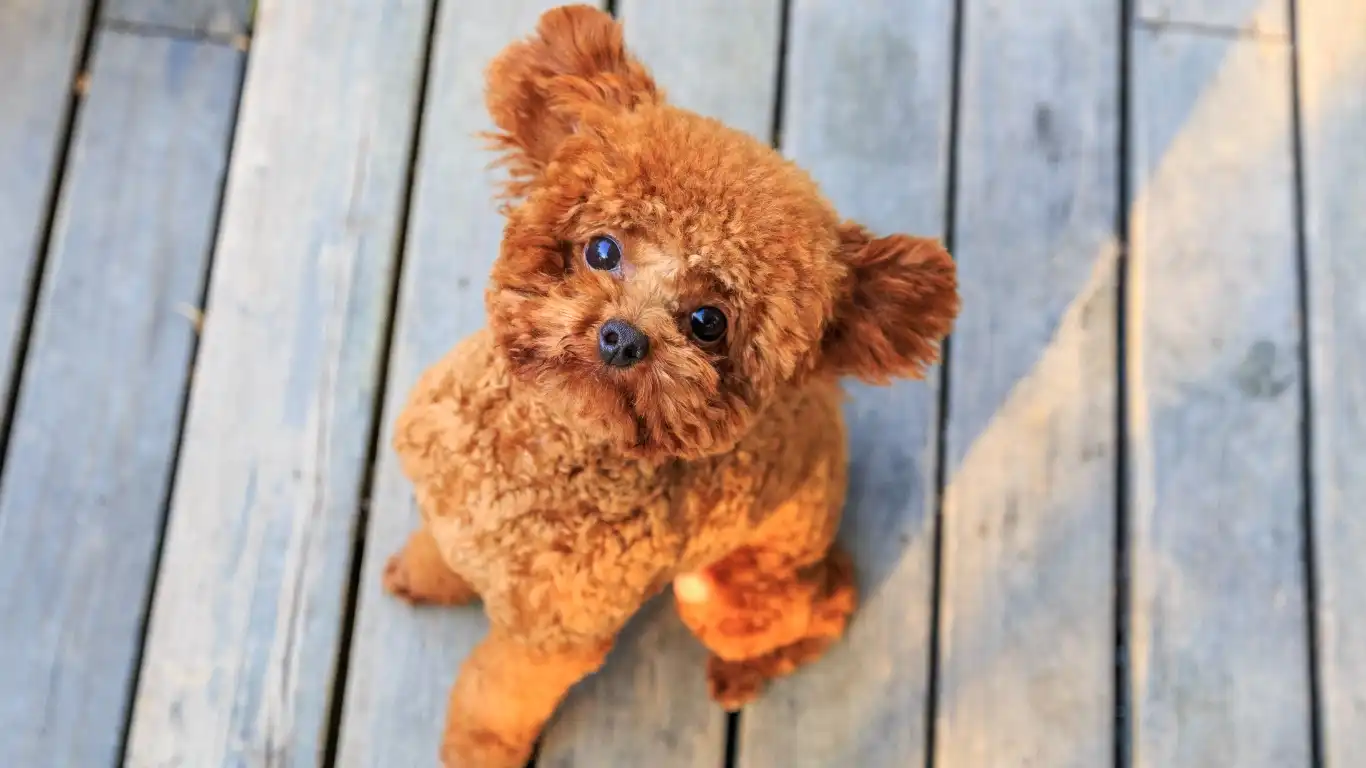
Socialization can be a little trickier for blind dogs, especially when it comes to interactions with other pets or people. However, it’s not impossible. Blind dogs are still very capable of forming strong bonds with other animals, and they can enjoy playing and socializing with their furry companions just like any other dog. The key is to introduce them to new situations gently and with care. Here are a few strategies to help your blind dog thrive socially:
Gradual Introductions to New Pets
If you have other pets in the home, it’s important to introduce them slowly and carefully. Blind dogs might not be able to see the signals or body language of other animals, so it’s crucial to give them plenty of space and time to adjust to their new companions. Start with short, supervised introductions and keep the atmosphere calm and relaxed.
When meeting new pets outside the home, use a leash and keep your dog close to you. Monitor their behavior and make sure they’re comfortable with the new animal. Over time, your dog will start to understand the scent and sounds of the other pet, and they’ll begin to form a relationship based on trust and familiarity.
Socialization with People
Introducing your blind dog to new people can be tricky, especially if your dog is nervous or startled easily. Start by letting the new person approach slowly and softly, speaking in a calm voice to reassure your dog. It’s important that the person respects your dog’s space and gives them the opportunity to investigate at their own pace. Encourage your dog to engage with the person by offering treats and praise when they show interest or behave calmly.
Maintaining Your Blind Dog’s Health and Well-Being

When it comes to caring for a blind dog, health and well-being go hand in hand with their ability to navigate safely. Their unique needs might require you to make some changes in your regular health care routine, but it’s completely manageable. From keeping up with routine check-ups to ensuring they get the right nutrition, every aspect of care will help your blind dog feel more comfortable and confident in their surroundings. As a Veterinary Technician, I’ve worked closely with pet owners to manage health concerns that are common among blind dogs. Let’s dive into some tips on how to keep your blind dog healthy and thriving:
Routine Veterinary Visits
Just like any dog, a blind dog needs regular vet check-ups to monitor their overall health. When blindness sets in, it’s especially important to keep an eye on their other senses and mobility. Blindness often occurs due to underlying conditions like cataracts, glaucoma, or other eye diseases. Regular vet visits will allow you to catch any potential problems early and ensure that your dog is healthy.
During visits, make sure your vet checks your dog’s hearing, mobility, and overall physical health. It’s easy to overlook potential issues when your dog isn’t showing obvious signs of pain, but subtle changes in behavior can often signal something isn’t quite right. By staying on top of these check-ups, you’ll be able to keep your dog in tip-top shape and help them live a long, happy life.
Maintaining a Balanced Diet for Your Blind Dog
Nutrition is always a crucial part of maintaining any dog’s health, but it’s especially important for blind dogs. Just like in humans, vision loss can sometimes be linked to nutritional deficiencies, so providing your dog with a balanced diet full of essential vitamins and minerals is key. I always recommend working with your vet to develop a customized feeding plan that supports your blind dog’s specific needs.
Some blind dogs may also experience other health issues that affect their mobility or weight. For example, if a blind dog has arthritis, the extra strain on their joints might affect their ability to move around. A good diet with anti-inflammatory ingredients like omega-3 fatty acids can be incredibly beneficial in these cases. Be sure to consider the following when creating your dog’s feeding plan:
- High-quality protein: Dogs with limited mobility may benefit from a protein-rich diet to maintain muscle mass.
- Joint support: If your dog has arthritis or any joint issues, look for food that contains glucosamine and chondroitin.
- Omega fatty acids: These essential fats can help reduce inflammation, improve coat condition, and support brain function.
If you’re not sure about what food is best for your blind dog, consult with your vet or a pet nutritionist. You can also consider adding supplements like fish oil or probiotics to support their immune system and digestive health. I’ve seen how a tailored diet can improve a dog’s quality of life, even when they’re faced with challenges like blindness.
Building Your Bond with Your Blind Dog

Having a blind dog means building a unique and beautiful bond. They may not be able to see you, but they can absolutely feel your presence, your love, and your care. In my experience, blind dogs often develop an even stronger emotional connection with their owners because they rely so much on touch, sound, and scent to navigate the world. Here are some ways to nurture your relationship and strengthen the bond with your blind dog:
Quality Time Through Touch
Blind dogs are often very tactile. They love physical affection, and spending time with them through touch is a great way to build trust and comfort. Regular petting, massages, and gentle grooming can all help your dog relax and feel more secure. If they’re feeling anxious or confused, a calming touch can help them regain their bearings. Additionally, spending time in a calm environment will make your dog feel more at ease. Take a few moments each day to just sit with your dog and let them rest their head on your lap or snuggle beside you.
Communication Through Voice
Your voice is incredibly important for a blind dog. They rely on it to gauge your mood and determine what’s happening around them. I’ve found that speaking in a calm, consistent tone helps reassure blind dogs, and they learn to recognize your voice more quickly than you might think. When you give them cues, always be gentle and patient. You don’t need to shout—just maintain a steady, soothing tone. You’ll notice your dog responding to your voice as they become more familiar with their environment.
Encouraging Positive Interactions
Playing and interacting with your dog, even in simple ways, is a great way to bond. Since blind dogs can’t rely on sight to play, it’s essential to engage them through sound, smell, and touch. You can introduce toys that make noise, like squeaky toys or crinkle balls, which they can chase and interact with. You can also create simple games that don’t require sight—like playing hide-and-seek, using verbal cues, or teaching new tricks. I’ve noticed that the more you play with them, the more confident and comfortable they become with their surroundings. It’s also a great way to keep their mind sharp and engaged, which can improve their overall well-being.
Supporting Your Blind Dog’s Emotional Needs
Living with blindness can be an emotional challenge for some dogs, especially when they’re just adjusting to the change. It’s important to be mindful of your dog’s emotional state and provide plenty of support to help them through the transition. You might notice some behavioral changes, such as increased anxiety or confusion, as they navigate their new way of life. Here are some tips to help your dog cope emotionally:
- Keep a predictable routine: Blind dogs feel more secure when they know what to expect. Try to keep feeding times, walks, and bedtime consistent, so your dog doesn’t feel anxious about changes.
- Provide safe spaces: Give your dog a quiet, comfortable area where they can retreat if they feel overwhelmed. This could be a cozy bed in a corner or a crate where they can relax.
- Use calming products: There are plenty of calming aids available, such as pheromone diffusers or anxiety wraps, that can help reduce stress for blind dogs.
In my experience, dogs are incredibly adaptable, and they thrive when they have the emotional support they need. With your love and guidance, your blind dog can continue to live a happy, fulfilling life, full of joy and companionship.
References
For more information about caring for a blind dog, I recommend checking out these reliable resources:
- PawPatron – A leading resource for dog health and care tips.
- Google Health – Expert advice on medical conditions and treatments.
Disclaimer: This article provides general advice and is not a substitute for professional veterinary care. Always consult your veterinarian for personalized medical recommendations and treatment options.



